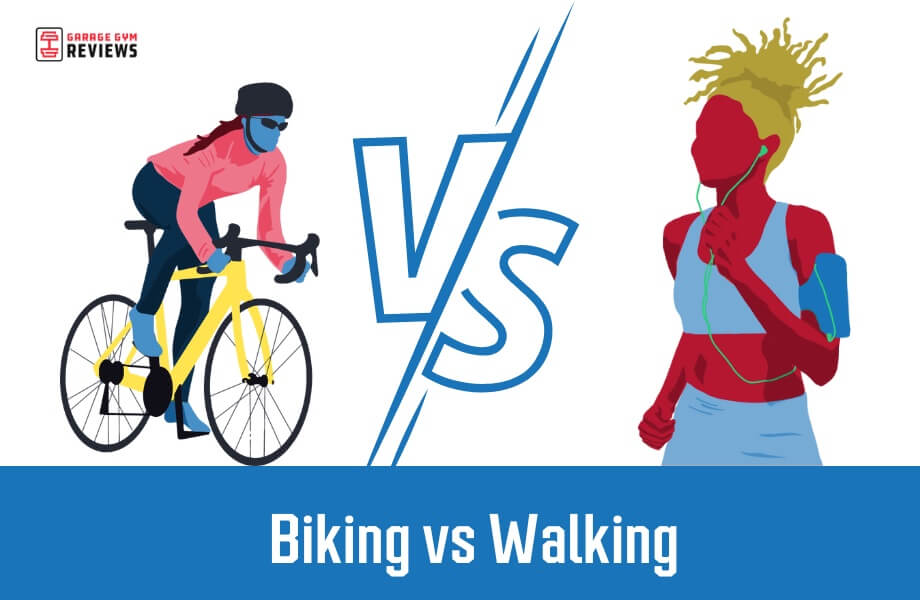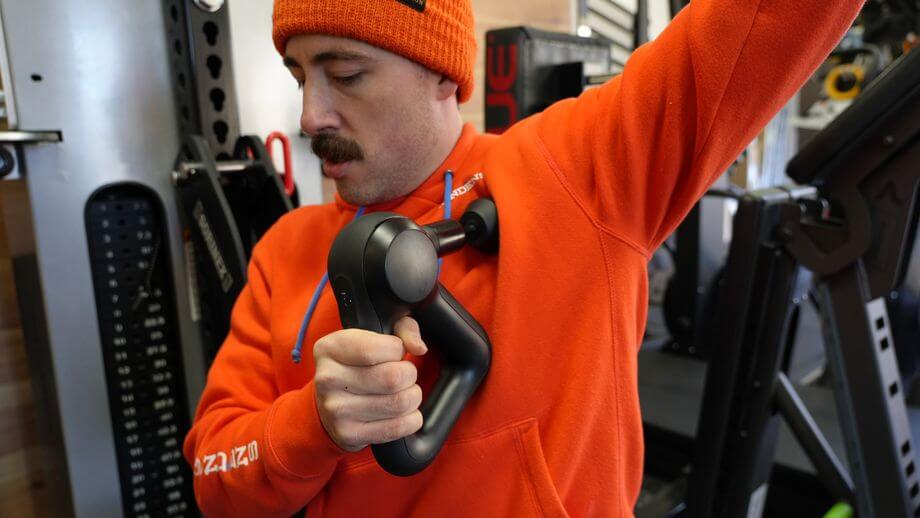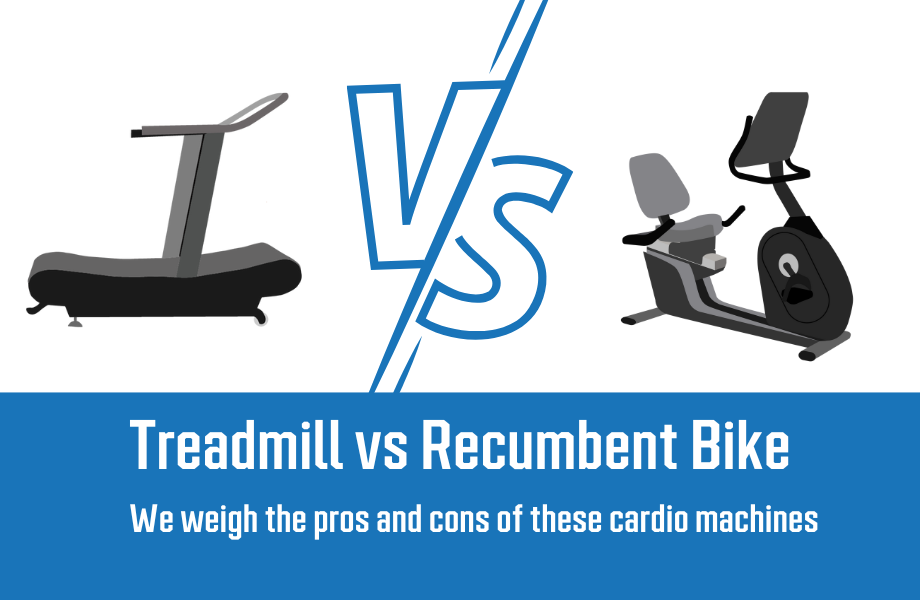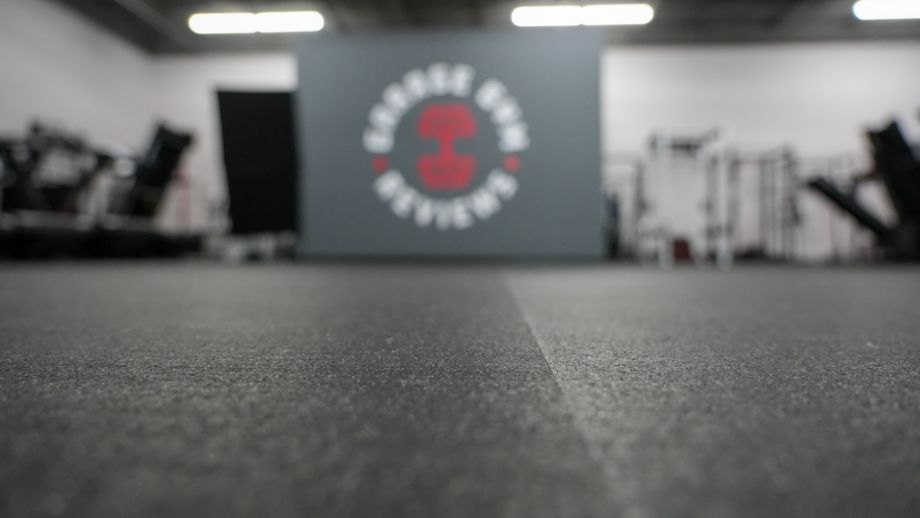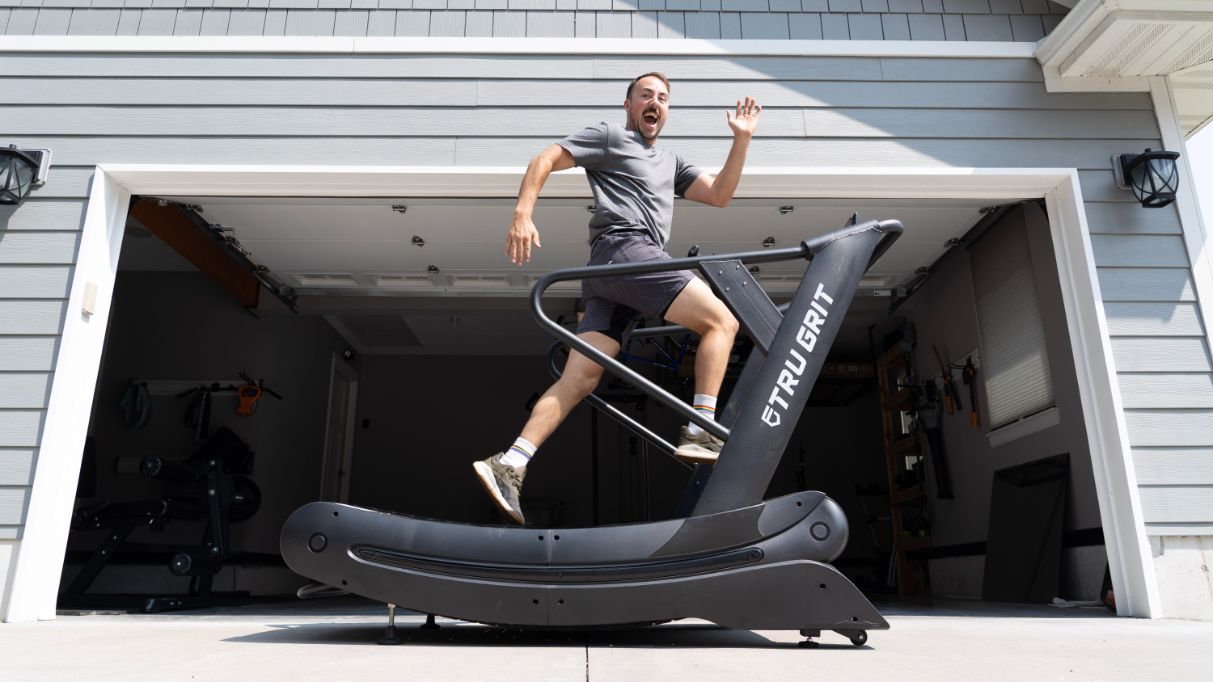We all know that aerobic exercise is chock full of health benefits, but it’s not always easy to decide which one you should do. After all, there are so many options to choose from when it comes to physical activity. However, two exercises that seem to always come up are biking and walking.
Whether you’re a beginner or an expert, trying to figure out which one is the best exercise for meeting your fitness goals isn’t always an easy feat. For instance, is taking a brisk walk better than going for a bike ride if you want to achieve weight loss? Or should you consider cycling to help burn stubborn body fat? To help you decide which one is best for you in the biking vs walking debate, we’re going to assess the pros and cons of both.
Key Benefits of Biking vs Walking
If you’re looking for lower-impact exercises, both walking and biking fit into that category. Neither workout causes a great deal of stress on the body or requires too many rest days. In fact, a lot of people choose to bike or walk on their rest days to ensure they get some form of calorie-burning physical activity.
RELATED: 9 Stationary Bike Benefits
In addition, the Centers for Disease Control and Prevention report that both physical activities can lower your risk of high blood pressure, reduce your risk of heart disease, and prevent weight gain. A 2013 study also demonstrated that those struggling with cholesterol issues can lower those levels through activities like biking and walking.
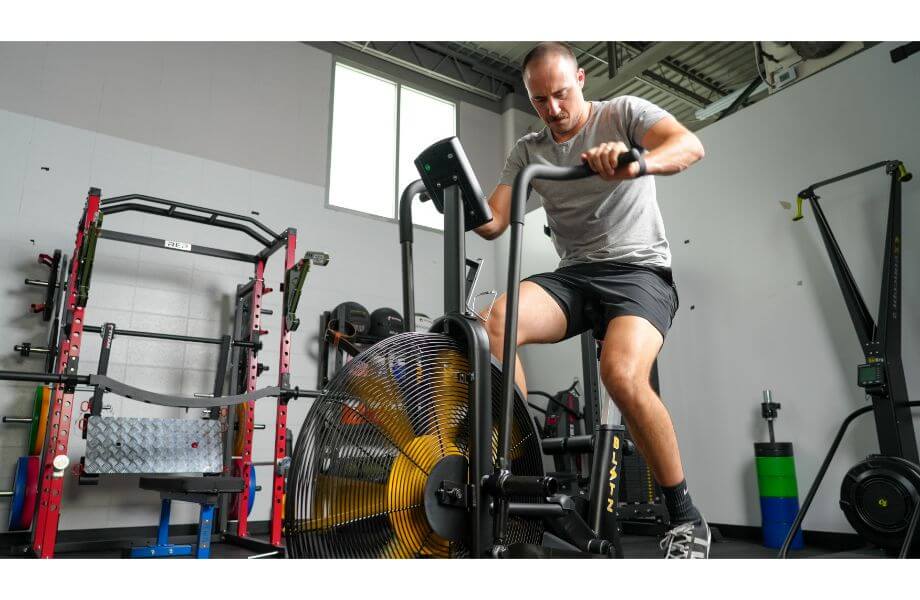
As you can already see, there are several benefits to doing both forms of exercise (there are even surprising benefits to walking backward). But in the case of biking versus walking, there must be a clear winner, right? Well, it depends on what you’re looking for.
Weight-bearing vs. Non-Weight-bearing
If you’re looking for a weight-bearing activity, walking is a better choice. Weight-bearing exercises cause you to work against gravity since you’re on your feet and making your bones support your weight. As Harvard Health points out, this actually helps slow bone loss and may even have the ability to build bone.
This is because activities like walking outside put stress on the bones, which stimulates extra deposits of calcium. These calcium deposits cause the bone-forming cells to spring into action, so you end up getting stronger and denser bones.
If you’re dealing with an injury, recovering from surgery, or managing a medical condition, non-weight-bearing exercises, like riding a stationary bike, are typically better. This type of exercise doesn’t require you to support your own weight as walking does. Plus, despite it being more low-impact, it’s still a great cardiovascular exercise and will get your heart rate up.
The Cost of Biking vs. Walking
One of the most attractive things about walking is that it’s practically free to get started. You may need to purchase comfortable shoes, but that’s about it if you’re just walking outside. Of course, you’ll have to spend a little more if you want your own home treadmill or decide to go to the gym.
RELATED: Best Walking Treadmills
If biking is more your style, it’ll require you to spend a bit more money. Purchasing the best exercise bike for your fitness goals or a regular bike is going to cost more than buying a pair of running shoes. Therefore, biking could be a deal breaker if you’re looking to spend very little to get started.
RELATED: Best Treadmill Running Shoes
| Benefits of Biking | Benefits of Walking |
| Non-weight bearing (places little stress on joints) | Weight-bearing (may slow bone loss or build bone) |
| Faster pace | More leisurely |
| Improves lower body strength | Can be done anywhere |
| Burns calories more quickly | No equipment required |
Muscles Used
One way to decide which exercise is best for you is to determine which muscle groups you’d like to improve. Both biking and walking use several of the same muscles, but they impact those muscles differently.
Riding a bike really uses the lower body muscles, especially your quadriceps and glutes. These muscles give you the power to pedal. In addition, you’ll use your hamstrings to help with knee stability and your calf muscles to support your ankles.
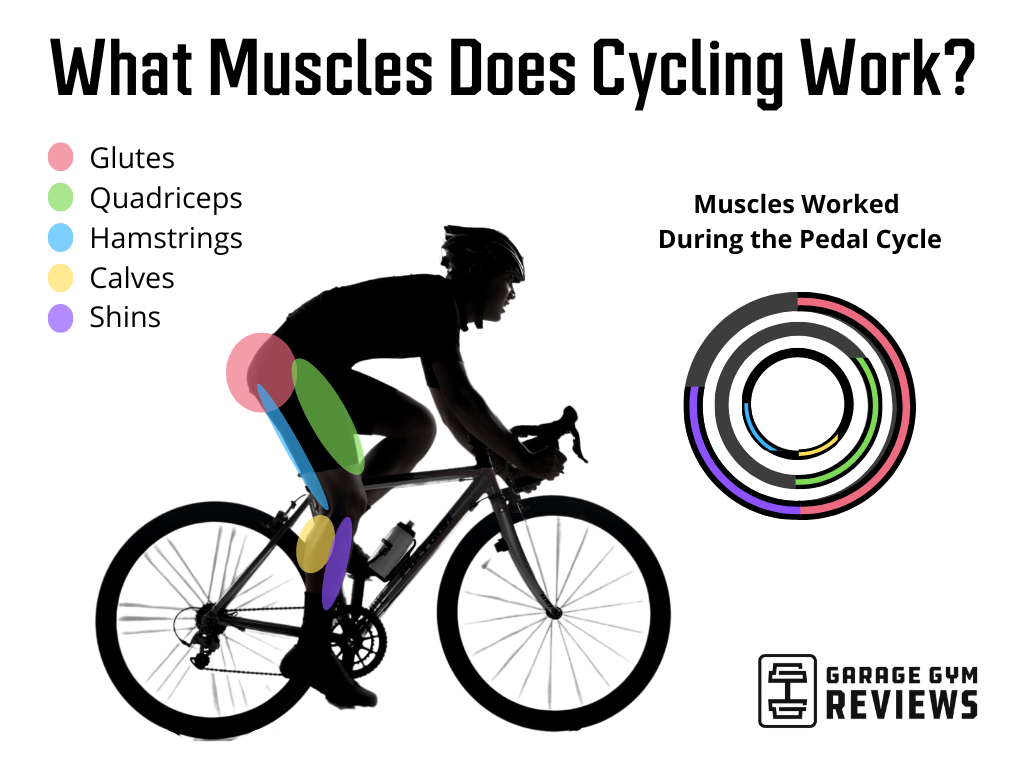
By the way, if you haven’t noticed, cyclists tend to have very muscular leg muscles, so if you desire that, biking is definitely the way to go. However, those aren’t the only muscles getting worked out.
Cycling also requires you to maintain balance, so your abdominal and back muscles will kick in to stabilize your upper body. Your triceps and lats play a significant role in helping to support your upper body as well.
When walking, you’ll primarily use your quads, hamstrings, and calf muscles, but not in the same complex way as cycling. Those muscles, along with your hip adductors, work to extend the knees and hips. The glutes and abdominal muscles assist you in moving forward by controlling and stabilizing your core.
Unfortunately, walking doesn’t activate the muscles in your arms as much unless you’re really, really power walking. Consider carrying small hand weights if you want to get your arm muscles involved.
Overall, don’t expect to get ripped from walking, but you might see some definition in your leg muscles from cycling.
| Muscles Used Biking | Muscles Used Walking |
| Quads | Quads |
| Glutes | Glutes |
| Hamstrings | Hamstrings |
| Calves | Calves |
| Triceps | Hip adductors |
| Abdominals | Abdominals |
| Latissimus dorsi (the lats) | Shoulder muscles (if carrying small weight) |
Improving Cardio Fitness
Looking to improve your cardiovascular fitness? Well, you’re in luck, because both walking and cycling may help with that! But before we jump into the details, I’ll first clarify what cardio fitness even means.
Cardiovascular fitness, sometimes called cardiorespiratory fitness, is defined as your body’s ability to take in oxygen and deliver it to your muscles and organs over a stretch of time. In order to assess one’s cardio fitness, it helps to measure their VO2 max (AKA oxygen uptake). Learning your VO2 max is very telling, as it shows you how efficiently your heart pushes blood to your muscles and how well your muscles can withdraw that oxygen from your circulating blood.
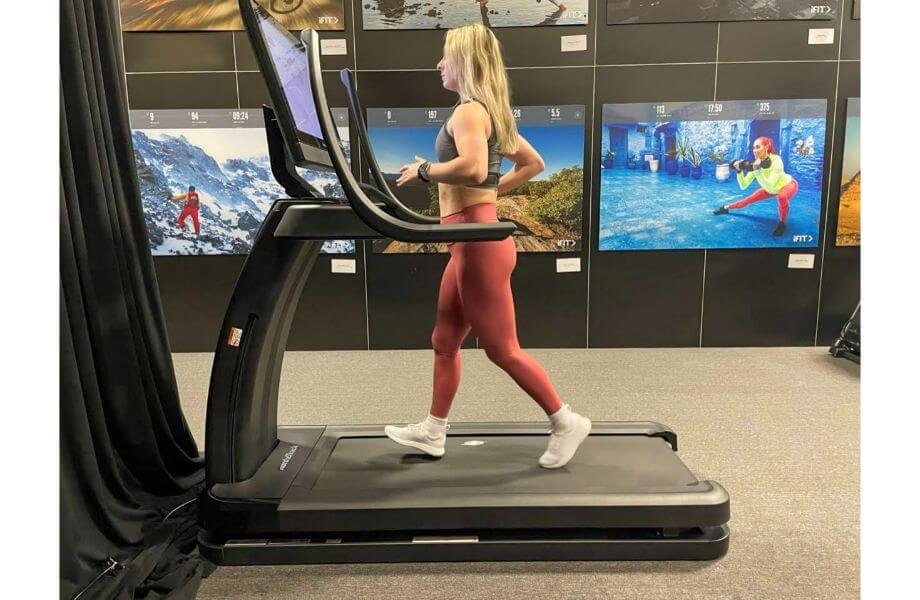
According to a study published in Medicina, indoor cycling may enhance aerobic capacity and significantly increase your VO2 max. Research also shows that people who cycle had a 15% lower chance of having a cardiovascular accident than non-cyclists. Therefore, it’s safe to say that if you’re looking for a good cardio exercise, cycling is it.
Walking can also improve your cardio fitness, but not as much as cycling. A small study in the late 90s evaluated how walking with moderate intensity affects one’s VO2 max and identified that participants only saw a slight increase. So if you want to increase your VO2 max but don’t want to use an exercise bike, try running instead. One study shows that running is a better exercise than walking to improve your VO2 max rate.
HIIT vs. Steady State
High-intensity interval training is a great way to burn fat in a quick amount of time, but does cycling or walking fit into that category? Absolutely! As a matter of fact, for beginners, walking is a great way to introduce yourself to HIIT. Here’s an example workout for walking that you can do outside or on a treadmill:
- Walk slowly for 4 minutes
- Pump your arms and walk at a moderate pace for 2 minutes
- Walk slowly for 1 minute
- Pump your arms and walk at a moderate pace for 2 minutes again
- Pick up the pace and do a power walk where you’re walking 4 to 5.5 miles per hour
- Walk slowly again for 1 minute
- Repeat two more times
You can make your bike workout HIIT too! Find an indoor cycling bike and do a warm-up that gets your blood pumping and heart rate up. After that, try the Tabata method, where you push yourself to the max for 20 seconds and then come to a complete rest for 10 seconds. Do this for four minutes, and you’ll get a power-punching eight-round HIIT workout.
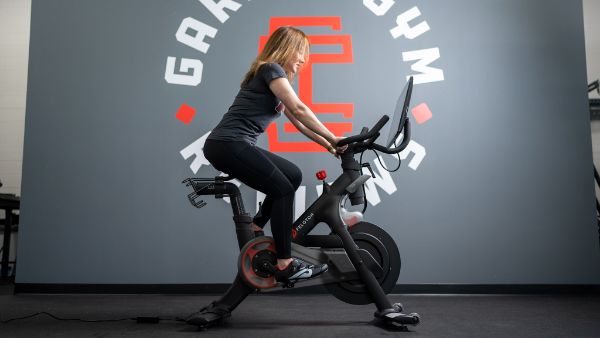
Great For Low-Intensity Steady State Cardio
You can’t think about steady-state cardio exercises without considering biking and walking. Both workouts are low-impact exercises that you can do at a moderate pace for a long period of time. The American Council of Fitness says that steady state cardio is an effective way to burn calories and train up your aerobic system. However, you have to be okay with the fact that it may take longer to see results.
An example of a steady-state cardio cycling workout would be biking for 90 minutes and keeping your max heart rate between 55% and 70%. Your rate of perceived exertion (RPE) should be 4 or 5, meaning that you’d be breathing heavily, but you could still pass the talk test.
A LISS cardio workout for walking might be walking outside on flat-terrain for 2 to 4 miles at a pace of 15 minutes per mile. However, if walking 15 minutes per mile feels more high-intensity to you, don’t be afraid to adjust your walking speed. Understand that everyone’s fitness level is different, so what might be steady-state for someone else might be high-intensity for you. Don’t like walking outdoors or the weather doesn’t make that an option? No problem! Another example is hopping on a treadmill for up to 60 minutes and walking at a moderate pace.
Burning Calories
Whether you decide to walk or bike, you’re still going to burn calories, but does one workout burn more calories than the other? Harvard Health did a deep dive into the amount of calories people burn doing different exercises over the course of 30 minutes. Let’s say you’re 155 pounds and walk 3.5 mph for 30 minutes. You’ll burn 133 calories. By quickening the pace to 4 miles per hour, you’d burn 175 calories in that same timeframe.
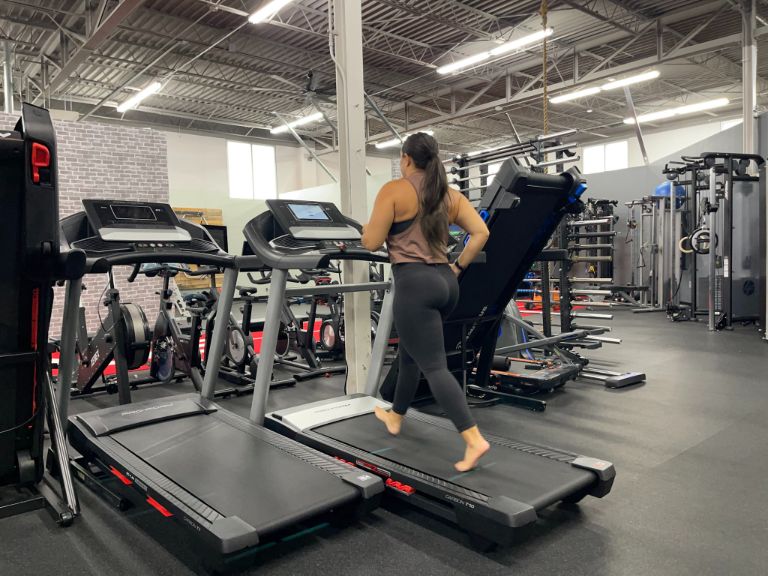
Bicycling, though, will provide slightly better results. Cycling on a stationary bike for 30 minutes at a moderate pace will knock off 252 calories. If you switch to a vigorous pace, you’ll burn about 278 calories. So if you’re trying to decide between walking or biking for 30 minutes, choose biking if burning calories is your goal.
Burning Fat
In order to lose 1 pound of weight, you’ll need to burn 3500 calories more than you take in. That means you’d need to reduce 500 calories per day to lose just one pound in a week. You can do this by cutting out high-calorie foods and working out, but which workout is better?
Cycling burns calories more quickly than walking, so bike riding is best if you want to burn more fat in one workout. However, one study did find that walking increased fat metabolism more than cycling. This could be because walking is a weight-bearing activity and cycling is not.
How to Choose: Biking vs Walking
When choosing between walking and biking, do the one you like the most. Don’t choose biking just because it potentially burns more fat and calories if you absolutely despise it. Working out is already hard, so you don’t want any mental barriers that’ll stand in your way. Not liking something is a sure way to talk yourself out of it, even if it’s good for you.
Another thing to consider is your level of fitness. If you’re just starting out, it might be better to try walking first and slowly introduce biking later. However, if you’re recovering from an injury or dealing with a medical condition that affects your joints, biking may be best as it’s a non-weight-bearing activity.
One final thing to consider is cost. Walking is free, but cycling requires that you use a bike. Therefore, you have to decide what’s best for you and what makes sense in the area that you live in.
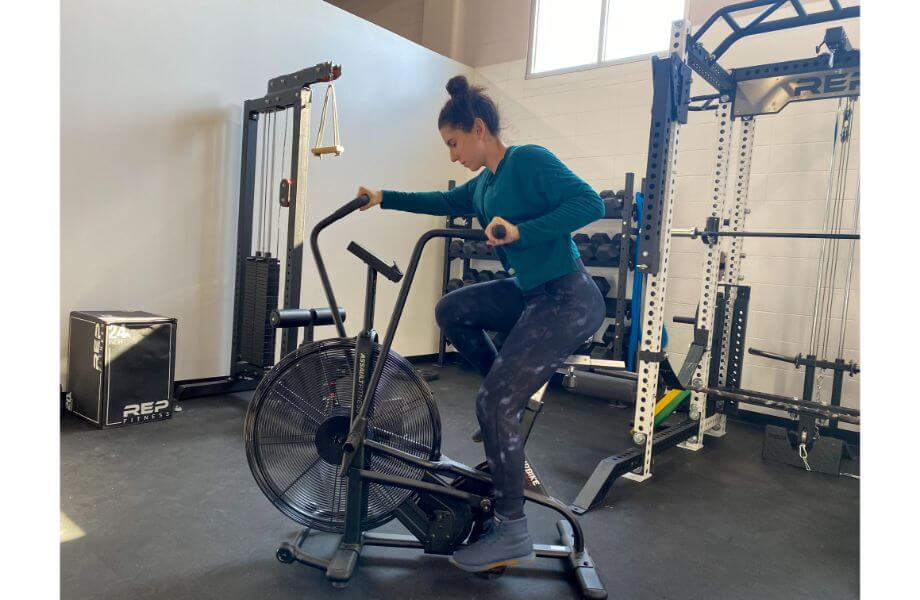
Biking vs Walking FAQs
Is it better to bike or run?
Both biking and running are great forms of cardio, but they each come with pros and cons.
Biking may be better if you have an injury or medical condition that impacts your joints. It also has the potential to grow and tone your muscles better than running due to the resistance it offers.
However, running is more natural and is typically easier to implement for people new to fitness. Research also shows that HIIT running is really good for burning stubborn belly fat, so if you’re looking to shrink your midsection, this might be a better choice.
Can walking replace biking?
Walking is a good alternative to biking, but you may not lose as many calories in one workout session. In addition, given that walking is a weight-bearing activity, it may be more stressful on your joints.
Which burns belly fat: biking or walking?
The answer to this isn’t so cut and dry. Since walking is a weight-bearing activity, it’s assumed that it naturally burns more fat. However, cycling burns more calories than walking in one workout session. Overall, if you do either type of exercise, you should lose fat, including belly fat, but neither workout will target the belly specifically.


